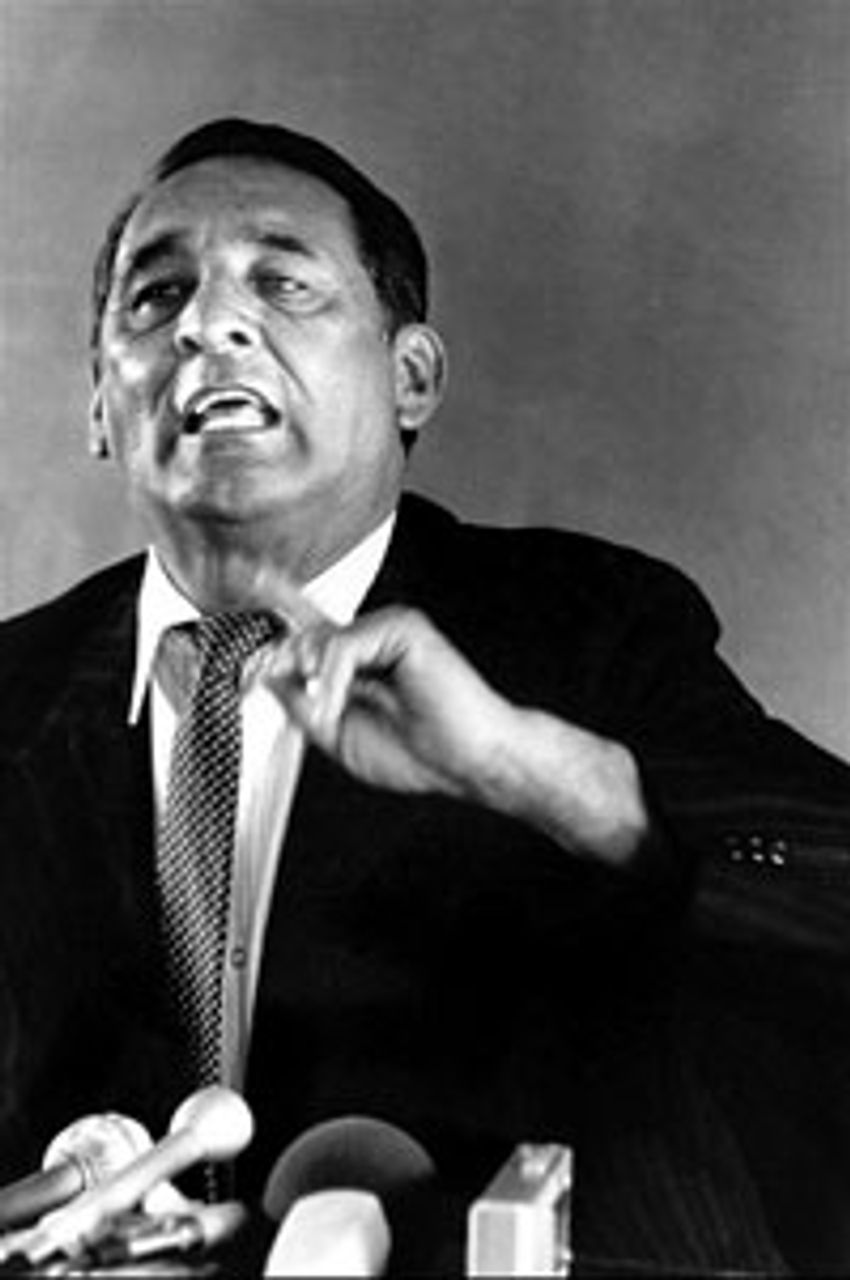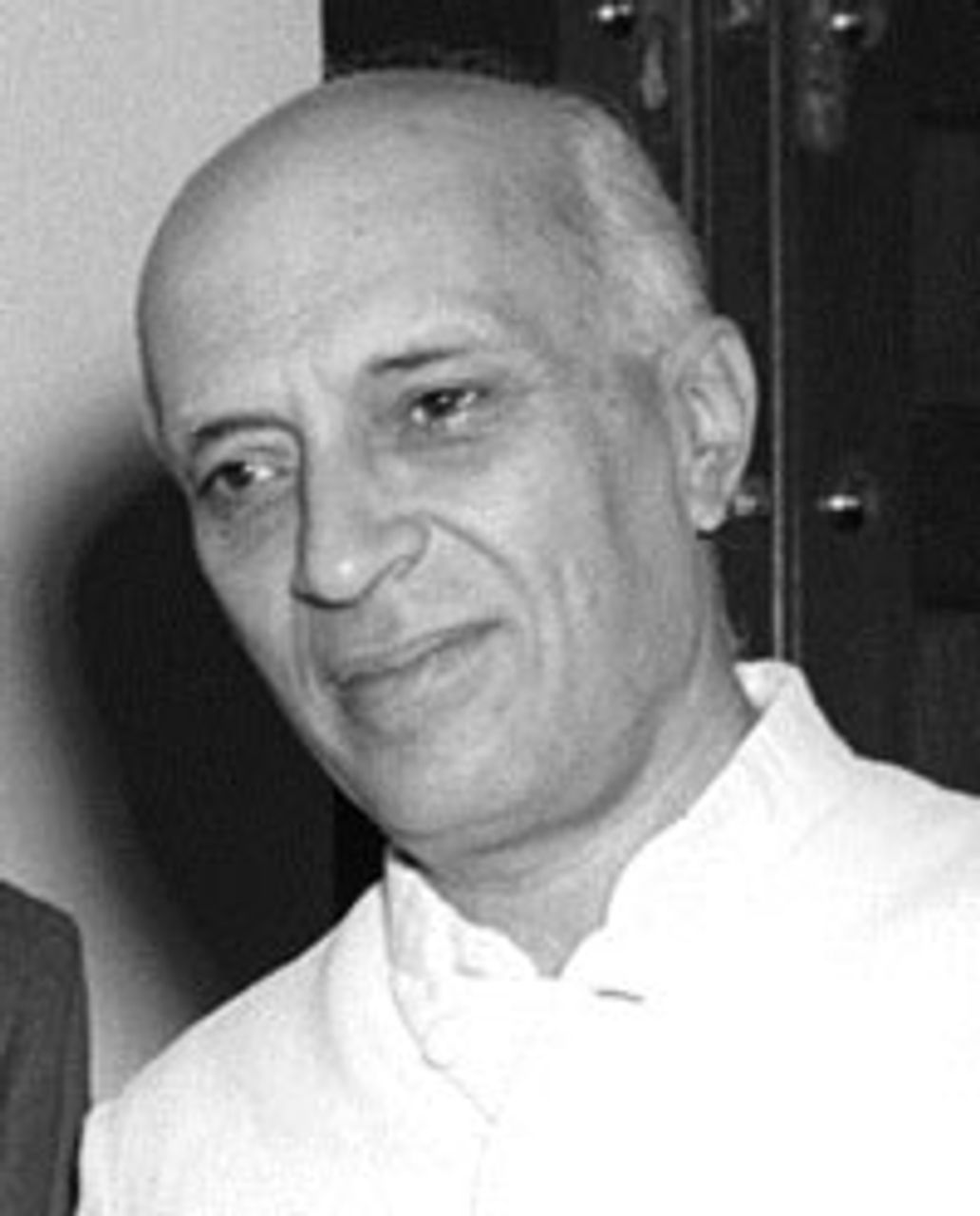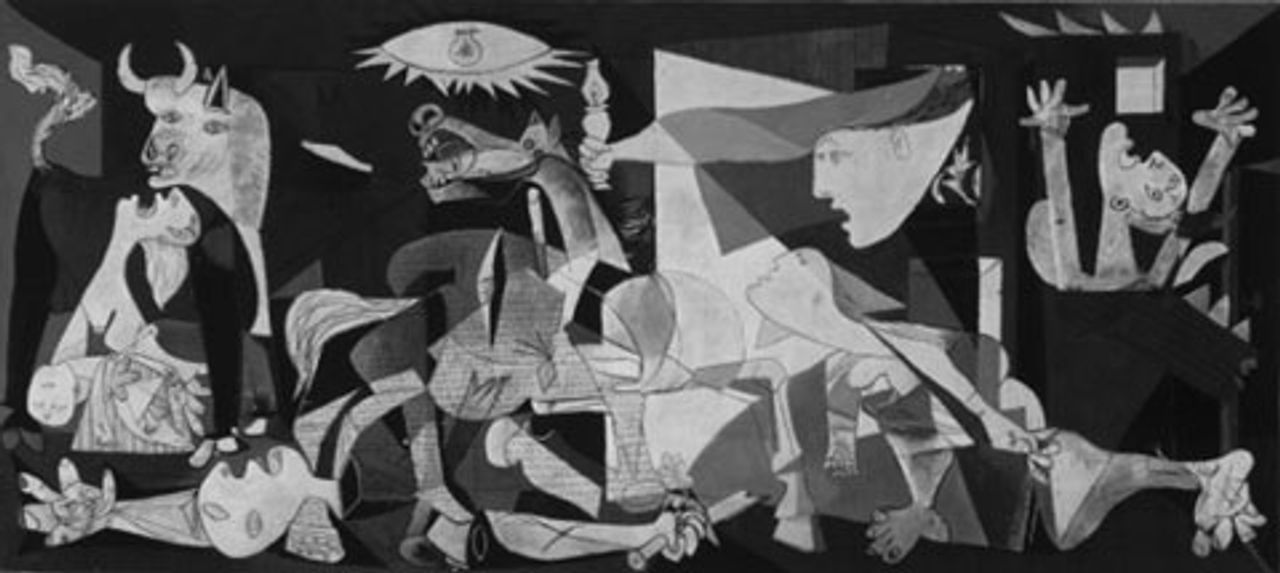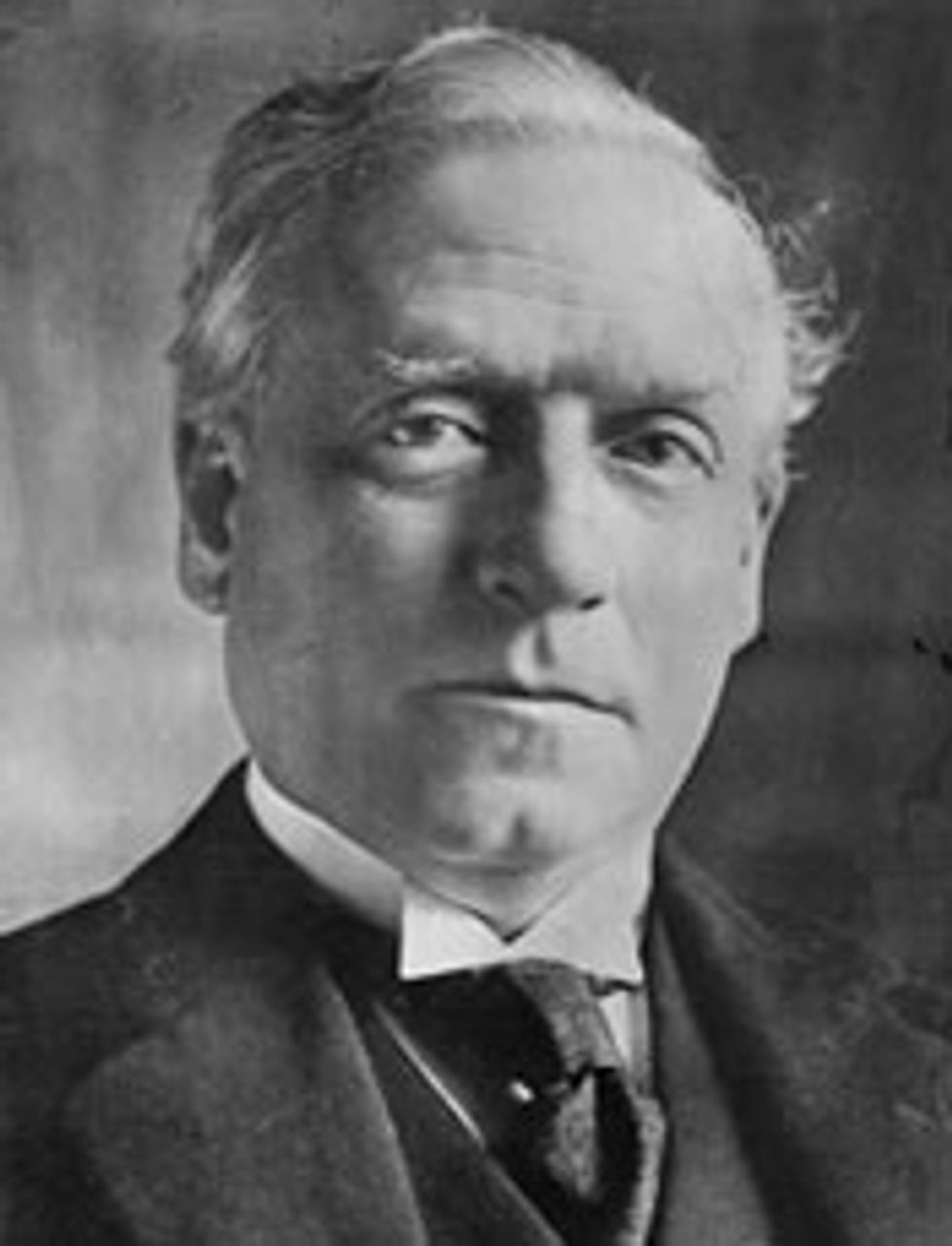This Week in History provides brief synopses of important historical events whose anniversaries fall this week.
25 Years Ago | 50 Years Ago | 75 Years Ago | 100 Years Ago
25 years ago: Civil war, protests deepen over death squad murder in El Salvador
 Jose Napoleon Duarte
Jose Napoleon DuarteOn October 29, 1987 the head of El Salvador’s Commission of National Reconciliation, Reni Roldán, resigned as negotiations broke down between rebels and the right-wing US-backed government. The collapse was preceded by three days of vigils, protests and riots across the country in response to the death-squad assassination of human rights leader Herbert Anaya Sanabria. The country’s largest union, the National Union of Salvadoran Workers, declared the previous Wednesday a “day of indignation” and the Faribundo Marti National Liberation Front (FMLN), which had led an eight-year civil war against the regime, called a national transportation stoppage.
In Mariposa prison, the main detention center for Salvadoran political prisoners, at least 800 prisoners seized control of the prison offices. Crowds of outraged workers and students took to the streets and burned buses and cars in the center of the capital.
The murder provoked the most severe political crisis for the US-financed regime of President Jose Napoleon Duarte and exposed the fraud of “national reconciliation” supposedly being sought under the Central American peace accords. Roldán, upon his resignation, stated publicly, “The murder of Anaya, the disappearance of university labor leader Salvador Ubau, and other events do not seem to be isolated incidents. They are all part of an institutionalized pattern of conduct.”
Anaya was the second president and the seventh member of the Human Rights Commission to be assassinated since the group’s founding in 1978. In a radio broadcast by the clandestine Radio Venceremos, the FLMN explained its ending of negotiations with the government, “What’s the point of talking about democratization and a cease-fire when the government continues to wage its dirty war against unarmed civilians.”
Meanwhile, under the pretext of complying with the Central American peace accords call for a general amnesty, the Duarte regime pushed a law through the National Assembly just one day after the slaying of Anaya which provided impunity not only to his assassins, but to other military officers and rightist operatives responsible for the death squad assassinations and massacres of over 60,000 Salvadoran civilians since the early 1960s.
50 years ago: Nehru suspends civil liberties
 Jawaharlal Nehru
Jawaharlal NehruWith Indian armies routed by Chinese forces in the Himalayas, Indian Prime Minister Jawaharlal Nehru on November 3, 1962, suspended Articles 21 and 22 of the Indian Constitution, which had guaranteed individuals protection from arbitrary government arrest and killing. The move, technically ordered by President Sarvepalli Radhakrishnan, followed the imposition of a state of emergency on October 26, which would remain in effect until 1968.
With Chinese forces in control of the area they claimed in the Ladakh/Aksai Chin region, there had been a lull in the fighting and Foreign Minister Zhou Enlai had sent terms of a ceasefire to Nehru. Fighting would erupt again later in November, with still more reversals for the Indian army in store.
The defeats of the Indian army were a major embarrassment for Nehru and his Congress party. Nehru had done the greater part to provoke hostilities with Communist China through its “Forward Policy,” which sought to reassert the India-China border that had been imposed on the region during British imperialist domination. Nehru’s posturing had been emboldened by the China’s split with the Soviet Union.
However, in the context of the Cold War, both the US and the Soviet Union were constrained from supporting India. Washington began to airlift weaponry to India on November 2, but determined that too much support for India would push China and the Soviet Union back together. It was also restrained by its military alliance with Pakistan, which it secretly reaffirmed on November 5.
75 years ago: London exhibition of Picasso’s Guernica closes
 Guernica
GuernicaOn October 29, 1937 the exhibition of Pablo Picasso’s painting Guernica drew to a close after three and a half weeks on show to the public at the New Burlington Gallery in London’s West End. A number of Picasso’s preparatory sketches completed the exhibition and monies raised went to the Spanish relief fund. The exhibition was exceptionally timely because the fascist slaughter in Spain continued unabated. Gijon’s working class population—the city having fallen to Franco’s forces during the exhibition—was then being subjected to rape, slaughter, and robbery.
Picasso’s oil painting in somber tones of black, grey and white is an undoubted masterpiece depicting the chaotic and barbaric aftermath of a sustained fascist air raid upon the Basque Spanish town of Guernica in April 1937. The canvas is littered with the twisted and broken human and animal debris of carpet-bombing and the subsequent inferno which incinerated victims. The city of Guernica was selected for destruction by Franco’s generals because it was symbolic of Basque culture. Picasso’s painting has subsequently secured the status of an icon of anti-war imagery.
According to historian Juliet Gardiner, reviews of the work, initially at least, were somewhat mixed in their appraisal. For example, art historian Anthony Blunt criticized the painting as having no relevance to workers. Adhering to the Stalinist line of “socialist Realism,” Blunt wrote that the painting held appeal only to “the limited coterie of aesthetes who have given their lives so wholly to the cult of art that they have forgotten anything else. The rest of the world may see it, shudder and pass by.”
Blunt was quickly proved wrong when Picasso’s oeuvre subsequently left the then rarefied air of London’s West End and went on tour around England to Leeds and Oxford, returning to Whitechapel Art Gallery in London’s working class East End in January 1939. Ordinary people flocked to see the exhibition. Twelve thousand people queued to view the painting on its return to the capital and the £100 raised on that opening day alone was sufficient to send a food ship to Republican forces in Spain.
100 years ago: Fighting in first Balkans war intensifies
 H.H. Asquith
H.H. AsquithThis week in October 1912, armed hostilities in the first Balkan war escalated as Bulgaria attempted to drive the Ottoman Empire from Thrace. The war, which had begun on October 8, pitted Greece, Bulgaria, Montenegro, and Serbia against the ailing Ottoman Empire. Thrace, a region encompassing modern day north-eastern Greece, south-eastern Bulgaria, and European Turkey, was considered geo-strategically significant, and had been dominated by the Ottomans for centuries. The Ottomans had concluded an unfavorable treaty with Italy on October 18, ending the Italo-Turkish war, and effectively ceding control of its possessions in modern-day Libya.
The Turkish army prioritized the defense of the eastern front, in particular Thrace and Edirne, against Bulgaria. Defense of Thrace was crucial, as it was viewed as a gateway to Istanbul. The Bulgarian advance captured Kirklareli and Rodosto after a major battle at Lüleburgaz that lasted several days. Edirne was also under siege and the Ottoman army retreated to the outskirts of Istanbul on the Çatalca Line. At the same time, the Serbian army was making significant advances against the Ottomans, securing control of Novi Pazar, Prishtina and Skopje.
On November 2, King Peter of Serbia entered Skopje and Britain sent destroyers and battleships to Turkish waters. On November 4 the Ottomans appealed to Britain, France and Germany to intervene to end hostilities or to impose an armistice on the Balkan states. The French government refused. The New York Times on November 4, 1912 reported that Premier Poincaré maintained that an armistice would “check the advance of the allies and give the Turks time to reorganize and strengthen their armies.”
The Balkan forces continued fighting on all fronts. Greece took the island of Thassos and seized Salonica. On the day Greece took Salonica, Britain’s Prime Minister Herbert Asquith, declared that the victors would be “allowed to keep the prizes of victory.”
